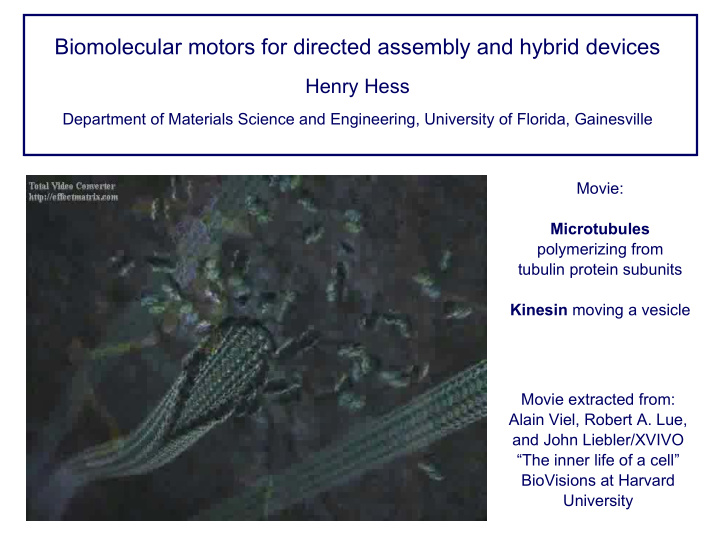



Biomolecular motors for directed assembly and hybrid devices Henry Hess Department of Materials Science and Engineering, University of Florida, Gainesville Movie: Microtubules polymerizing from tubulin protein subunits Kinesin moving a vesicle Movie extracted from: Alain Viel, Robert A. Lue, and John Liebler/XVIVO “The inner life of a cell” BioVisions at Harvard University
Bio-Nanofluidics Smart dust sensor Channel diameter: 50 µ m vs. 500 nm Baas, Microscopy Res. Techn. 48, 75 Sample volume: 500 nL vs. 10 fL Flow velocity: 1 mm/s vs. 50 µ m 1 µ m/s Guiding Loading Control
Smart dust sensor for remote detection of chem/bio agents Directed by: George Bachand Produced by: Sandia National Lab In collaboration with: Viola Vogel, ETH Zurich Banahalli Ratna, Naval Research Lab Peter Satir, A. Einstein College of Medicine Henry Hess, University of Florida With support from the DARPA Biomolecular Motors program
Self-assembly driven by biomolecular motors complements “Molecular Robotics” Thermally activated self-assembly: Nanorobotics using AFM: Control Cost per assembly step UNC Nanomanipulator Ned Seeman’s DNA cube Molecular Robotics with motor proteins: Cargo Shuttle system Molecular Molecular Shuttle System Delivery motors Sorting Shuttle Cargo Transporting Loading detail Cargo Assembly Delivery
Recommend
More recommend